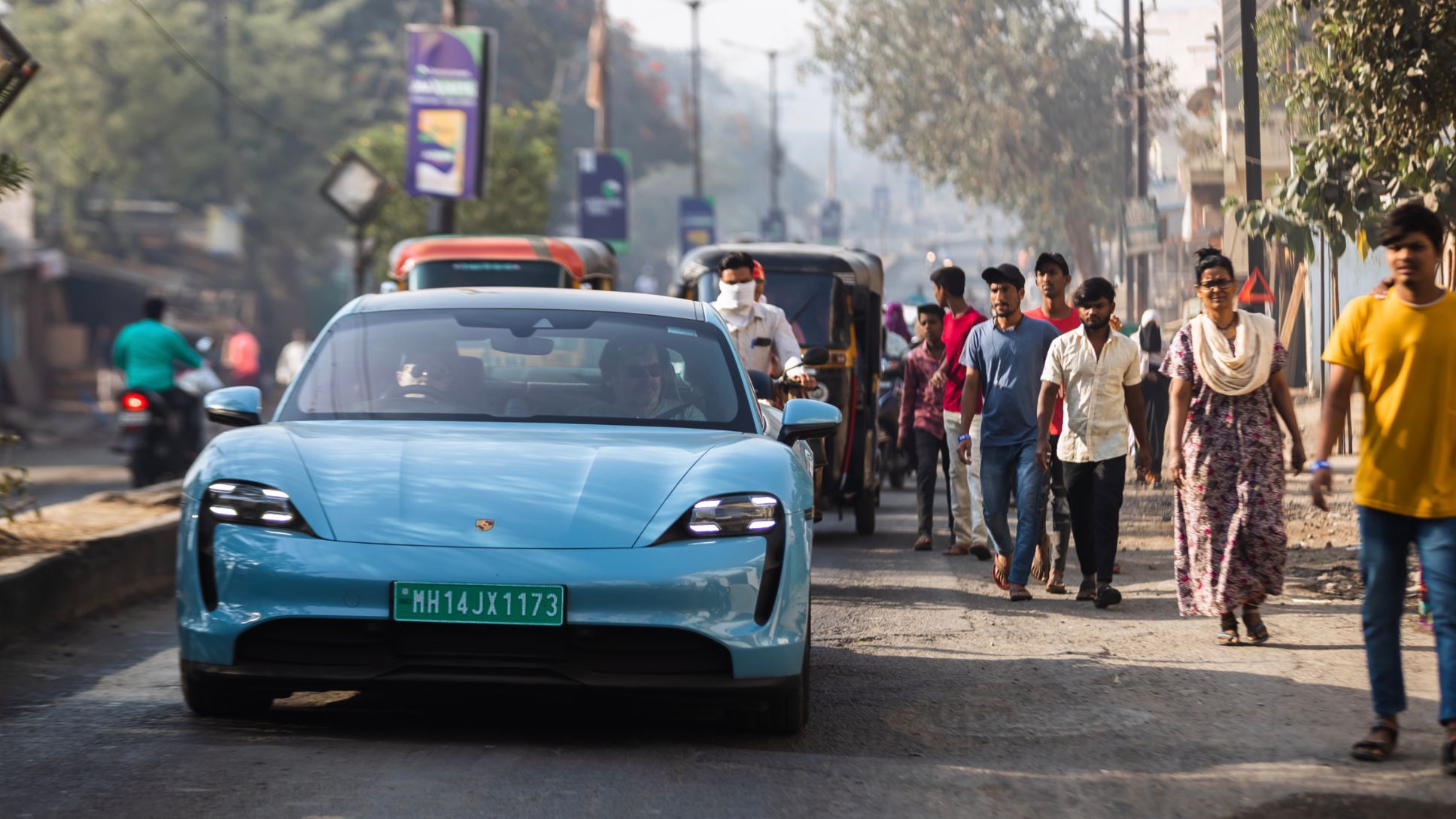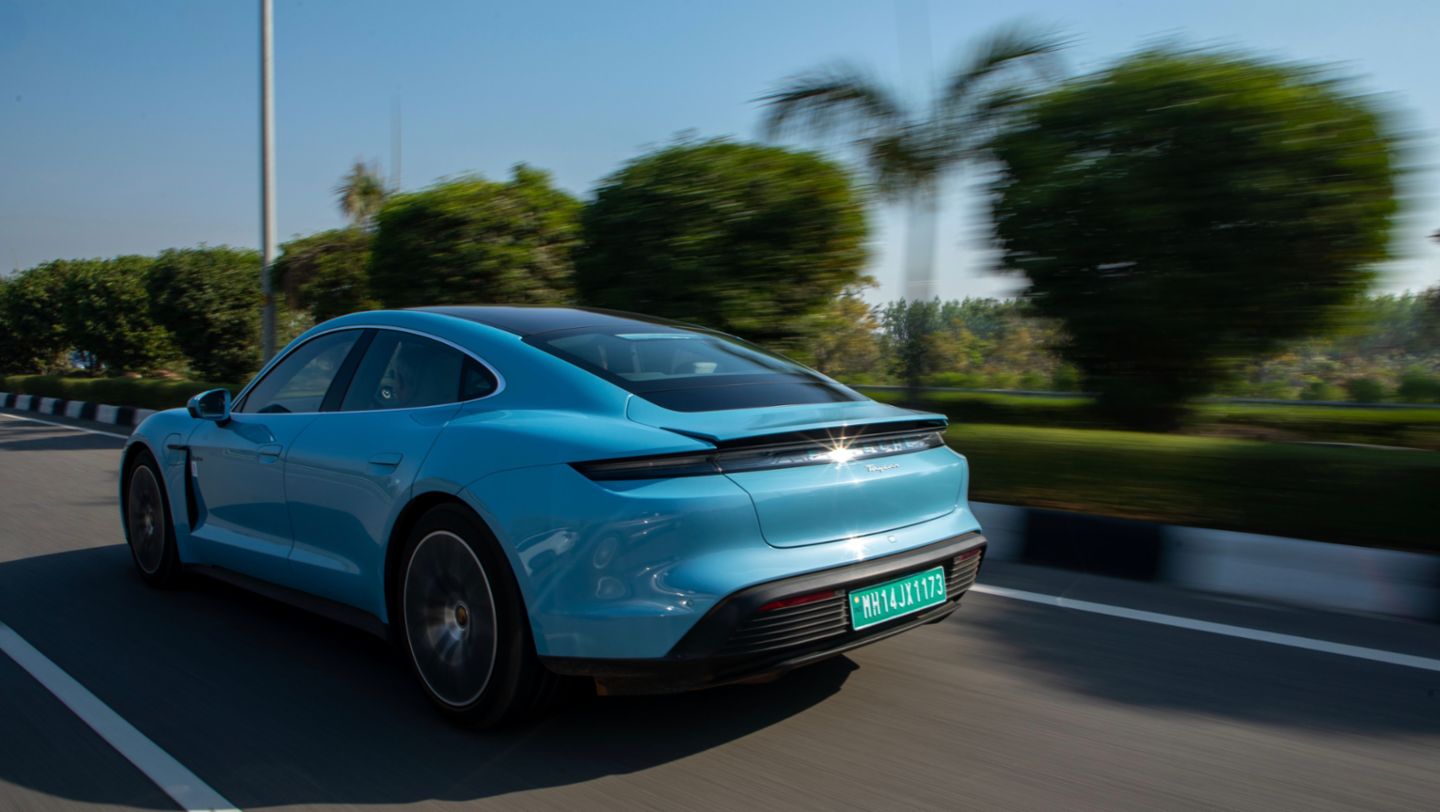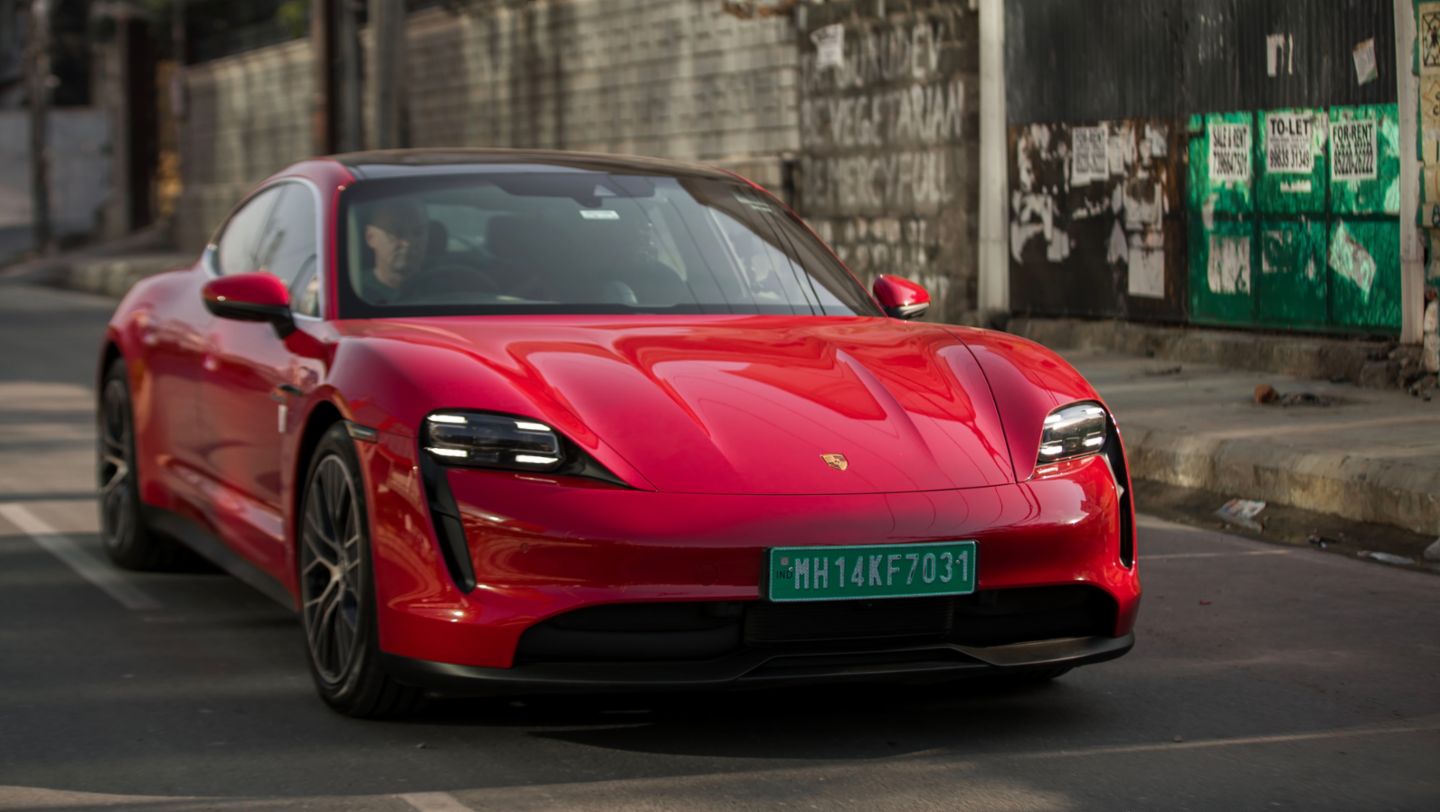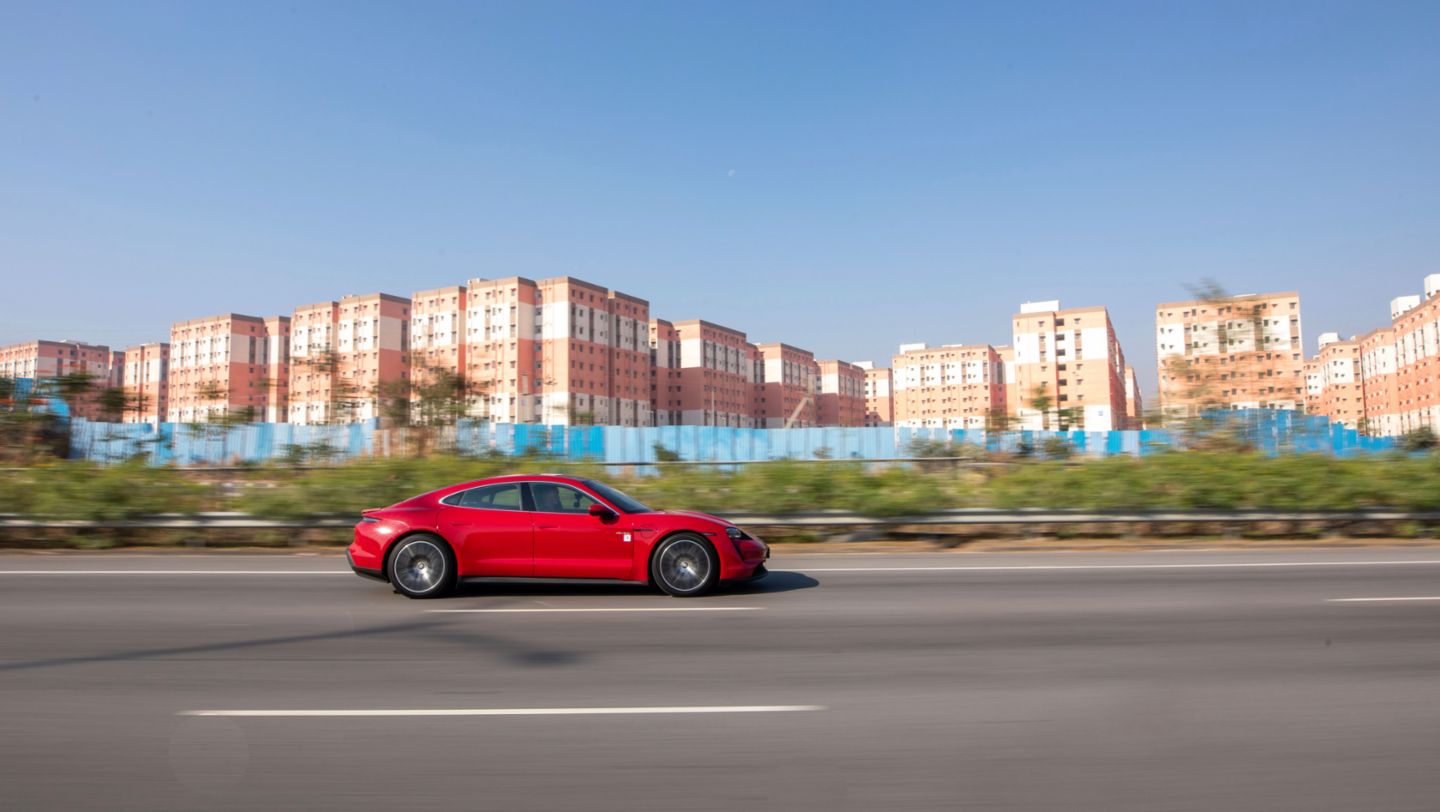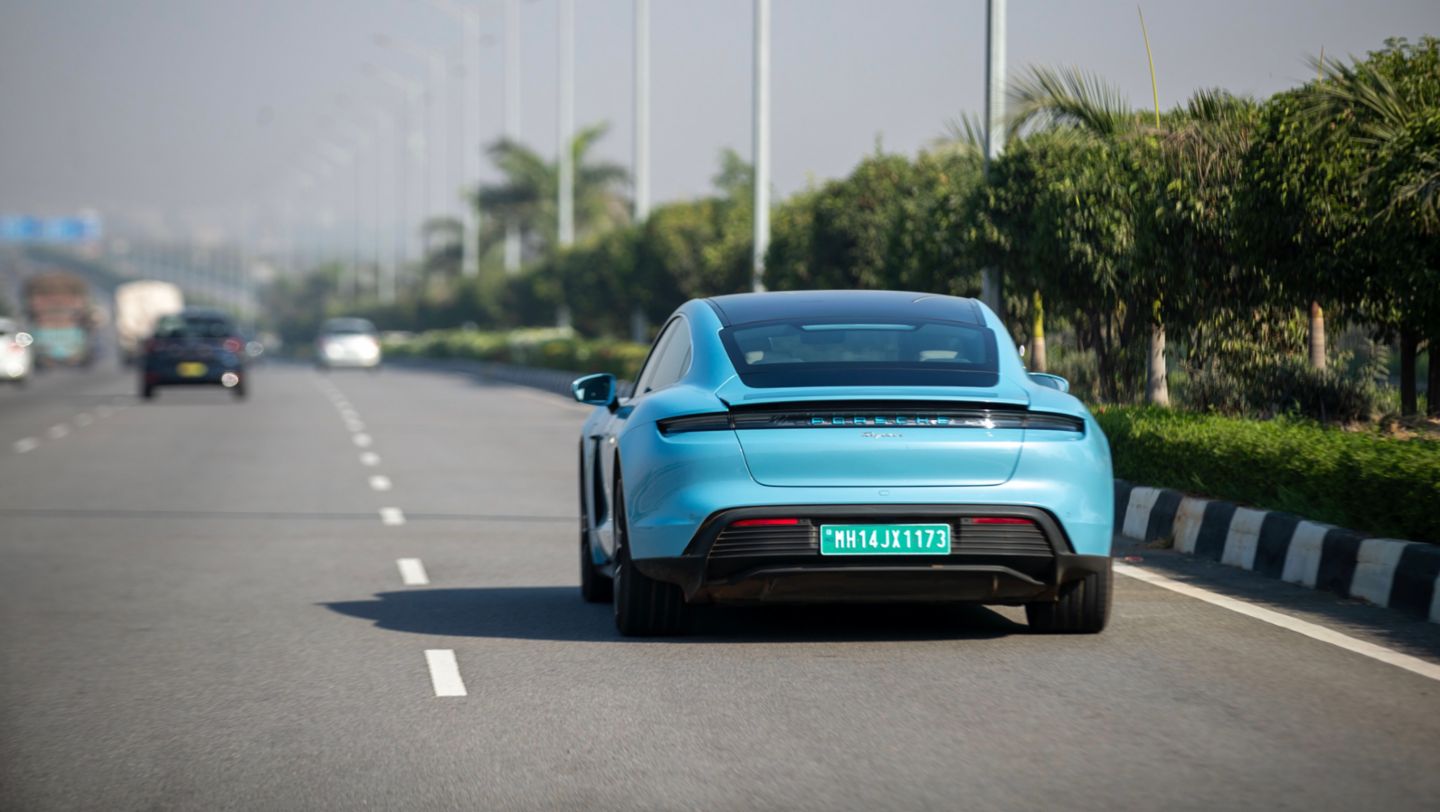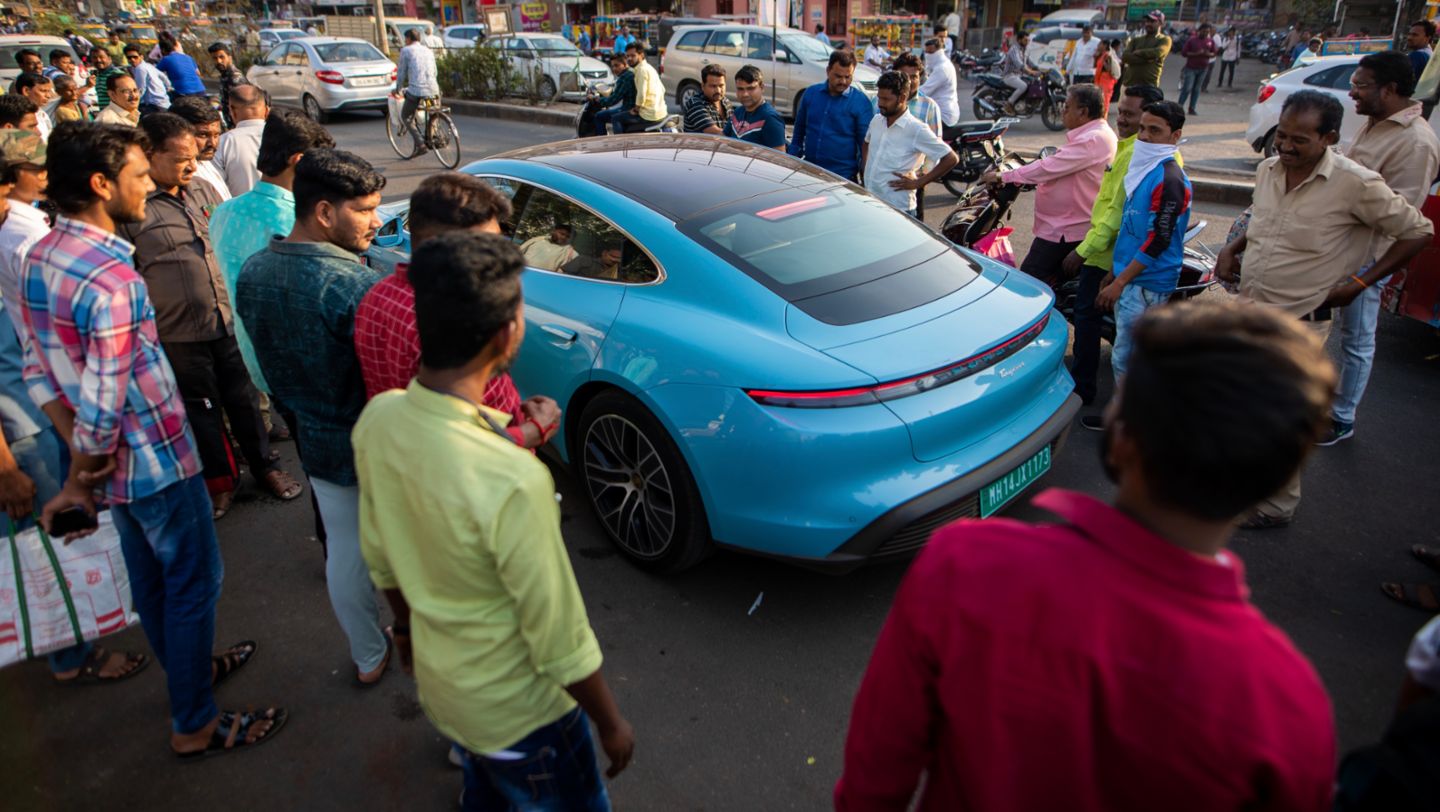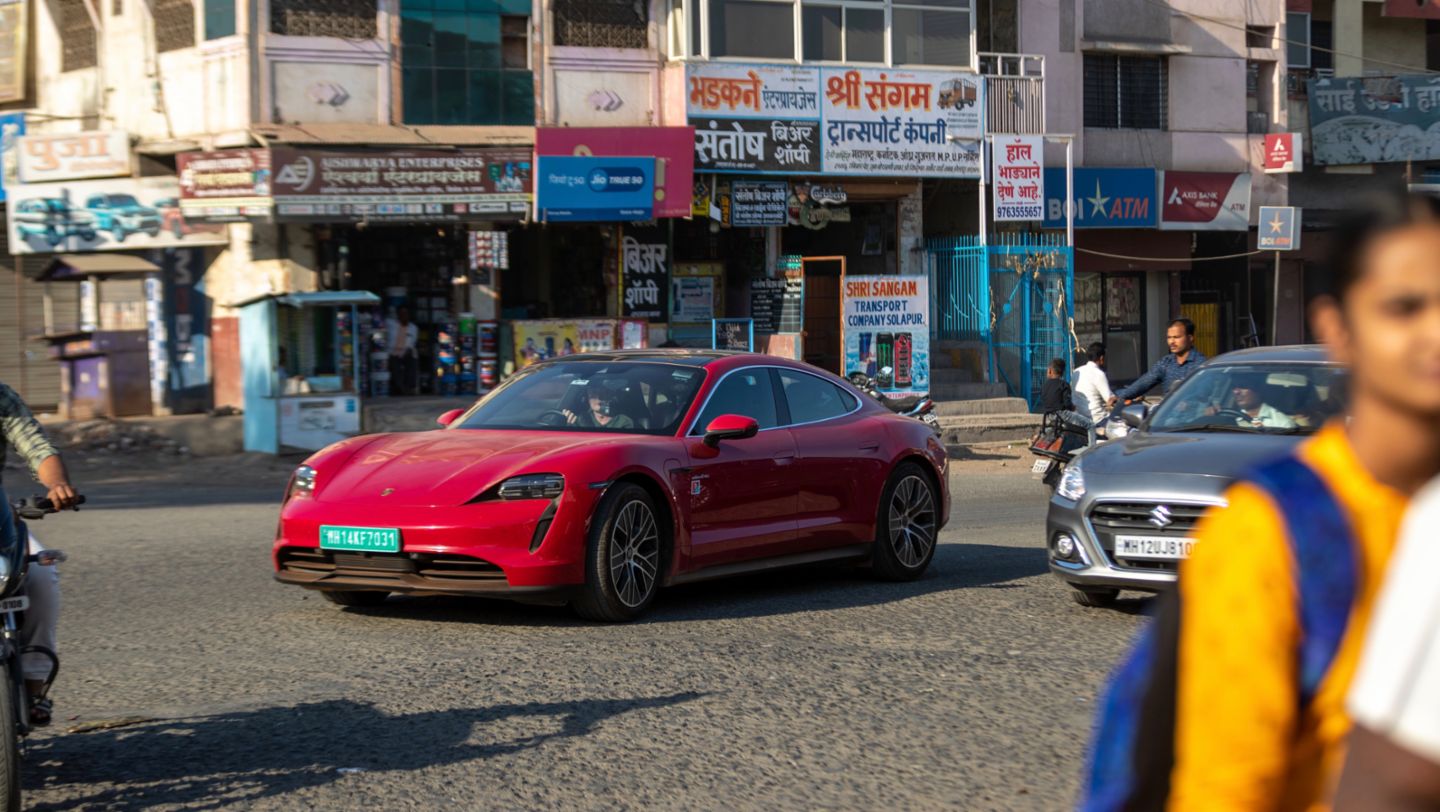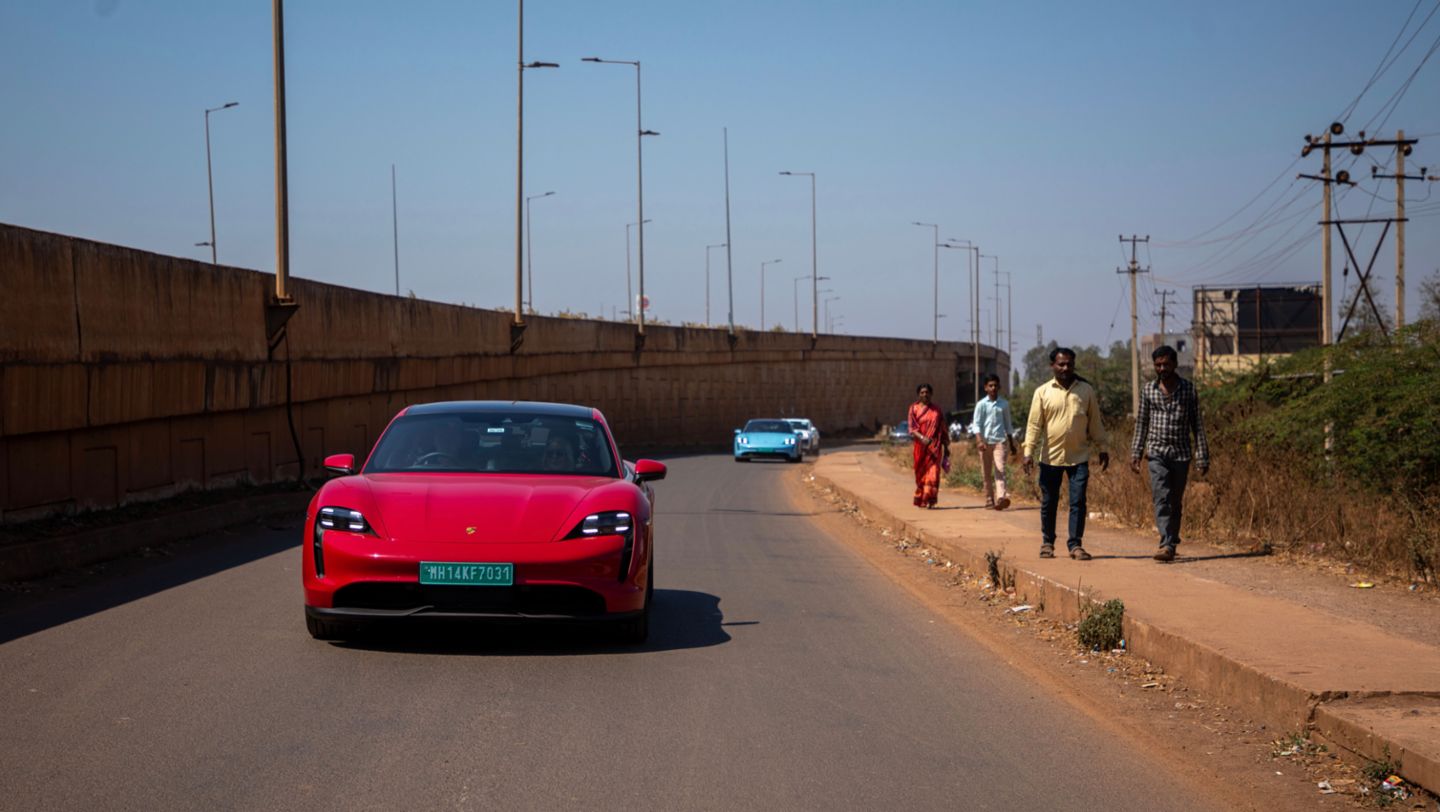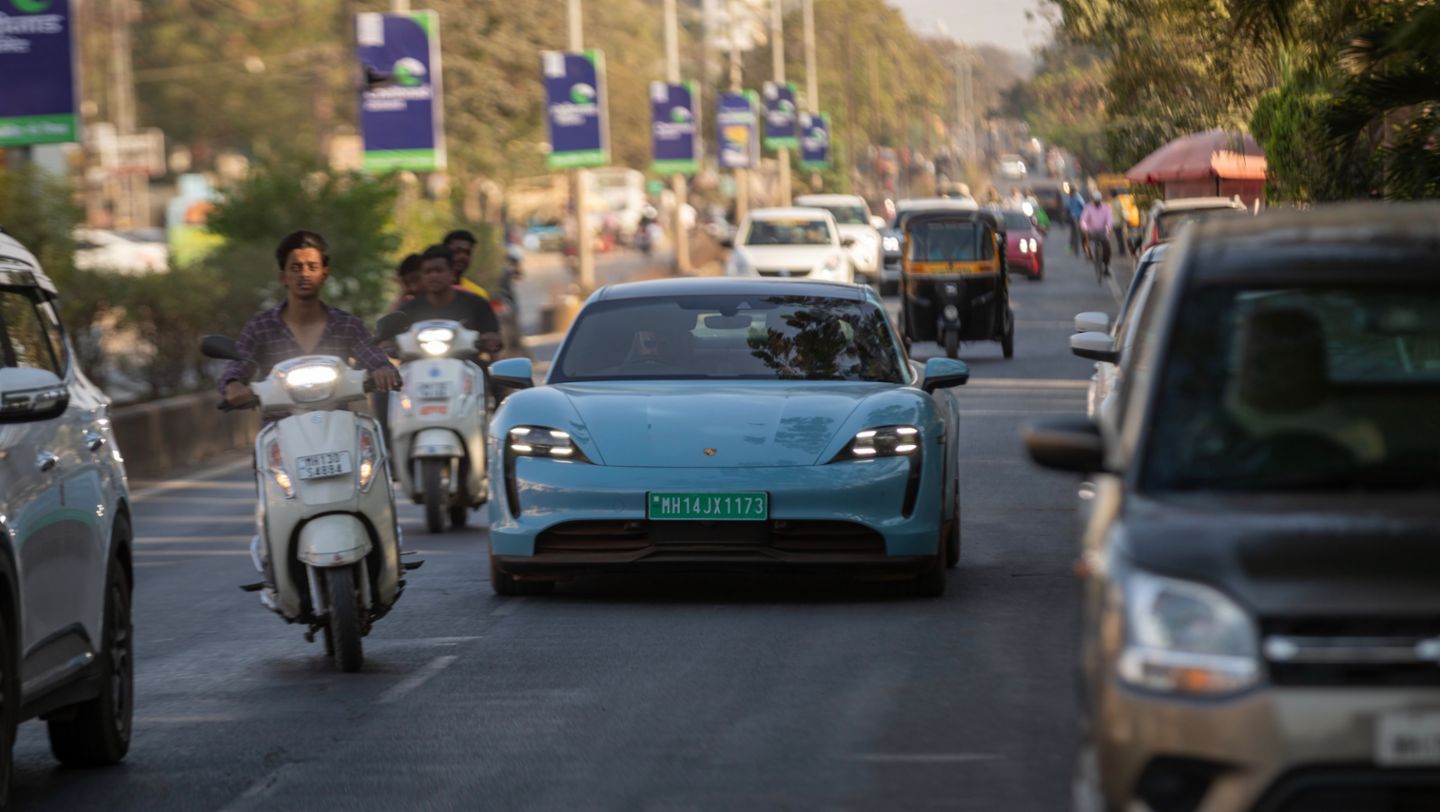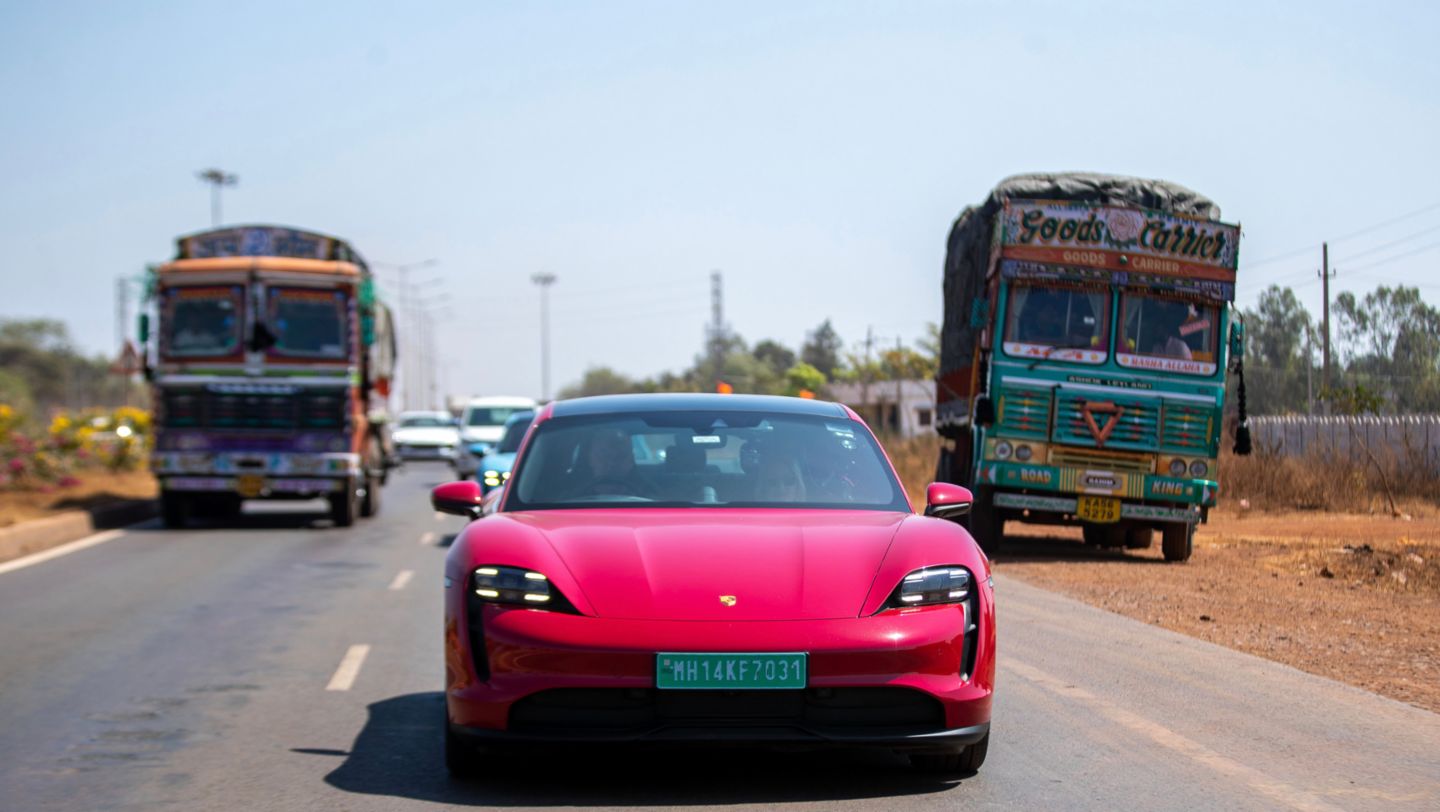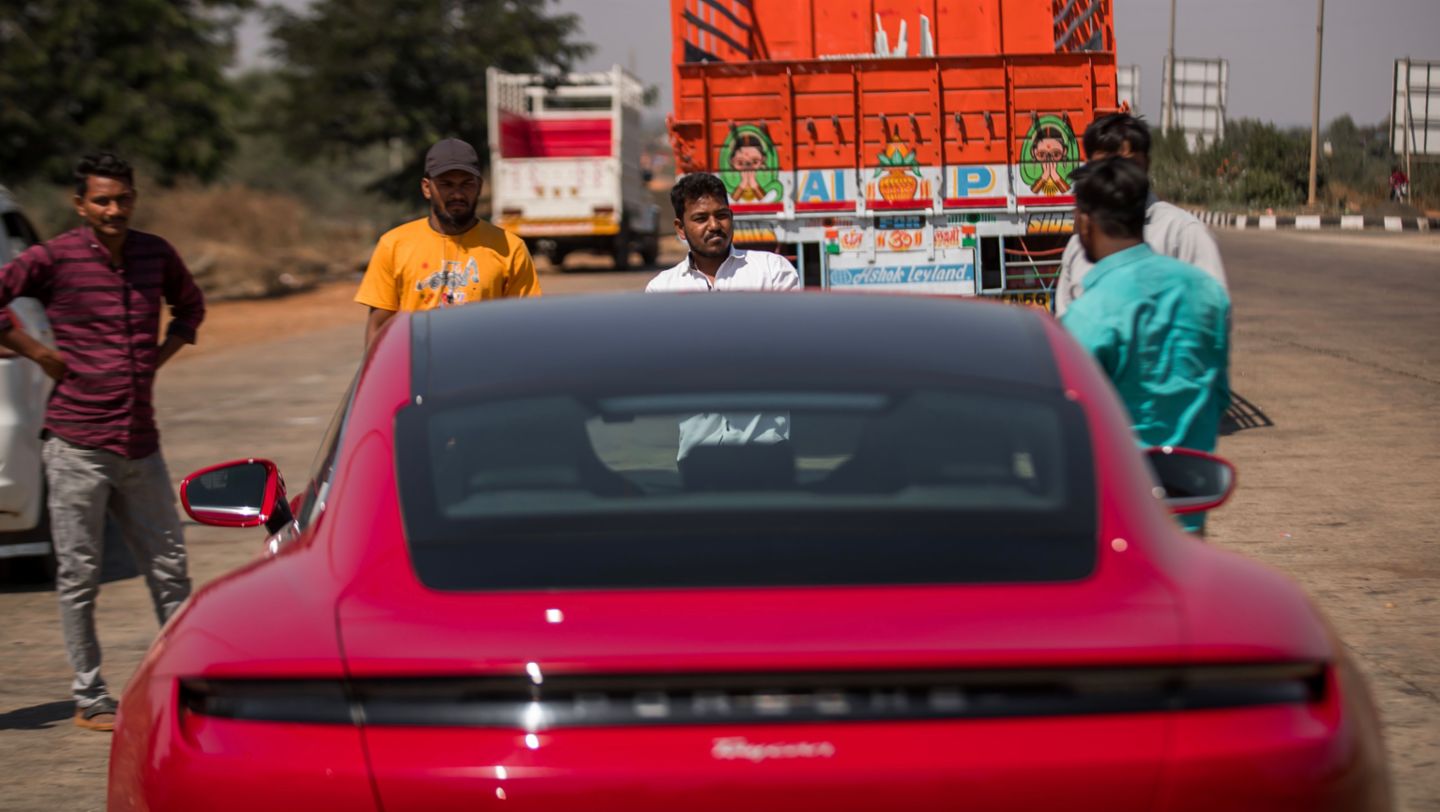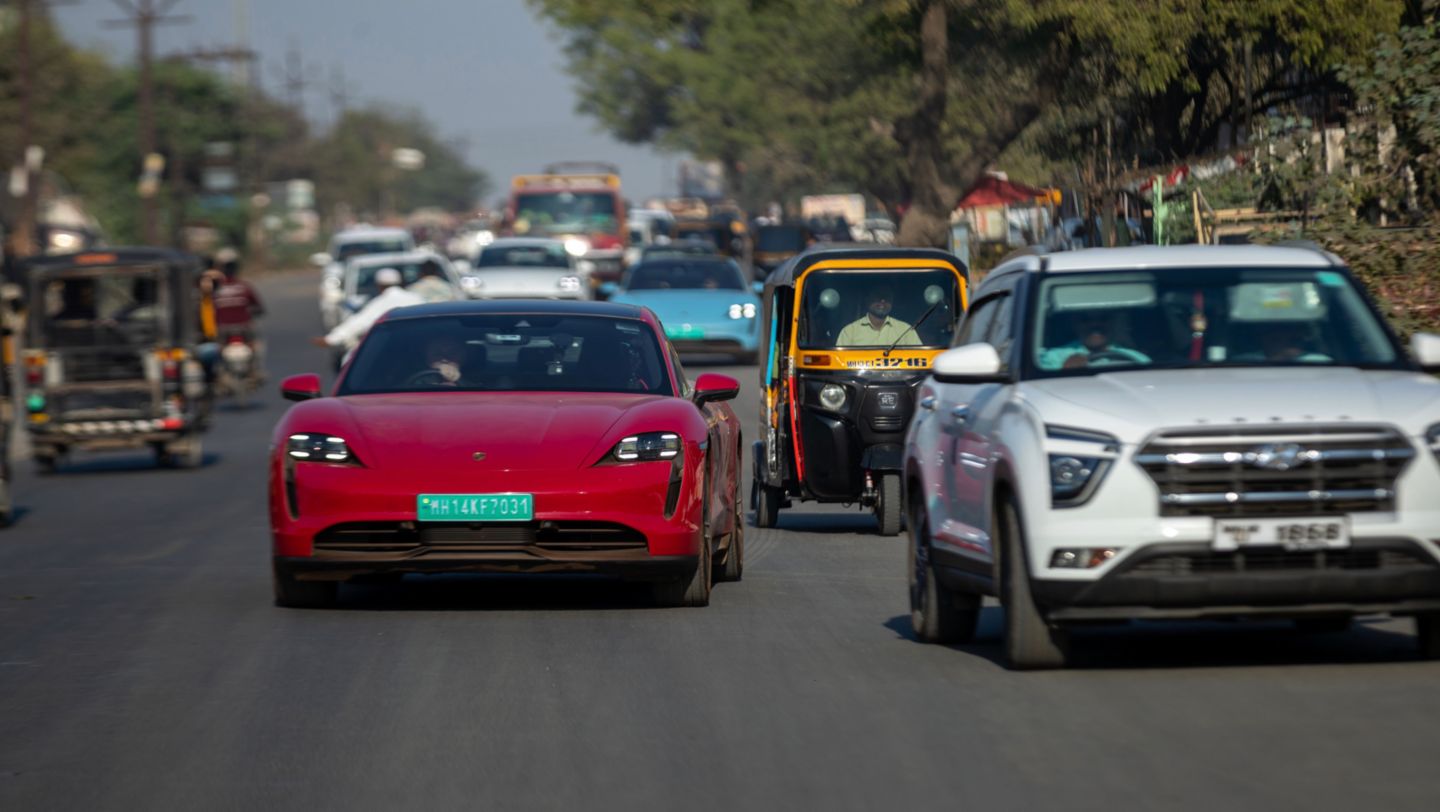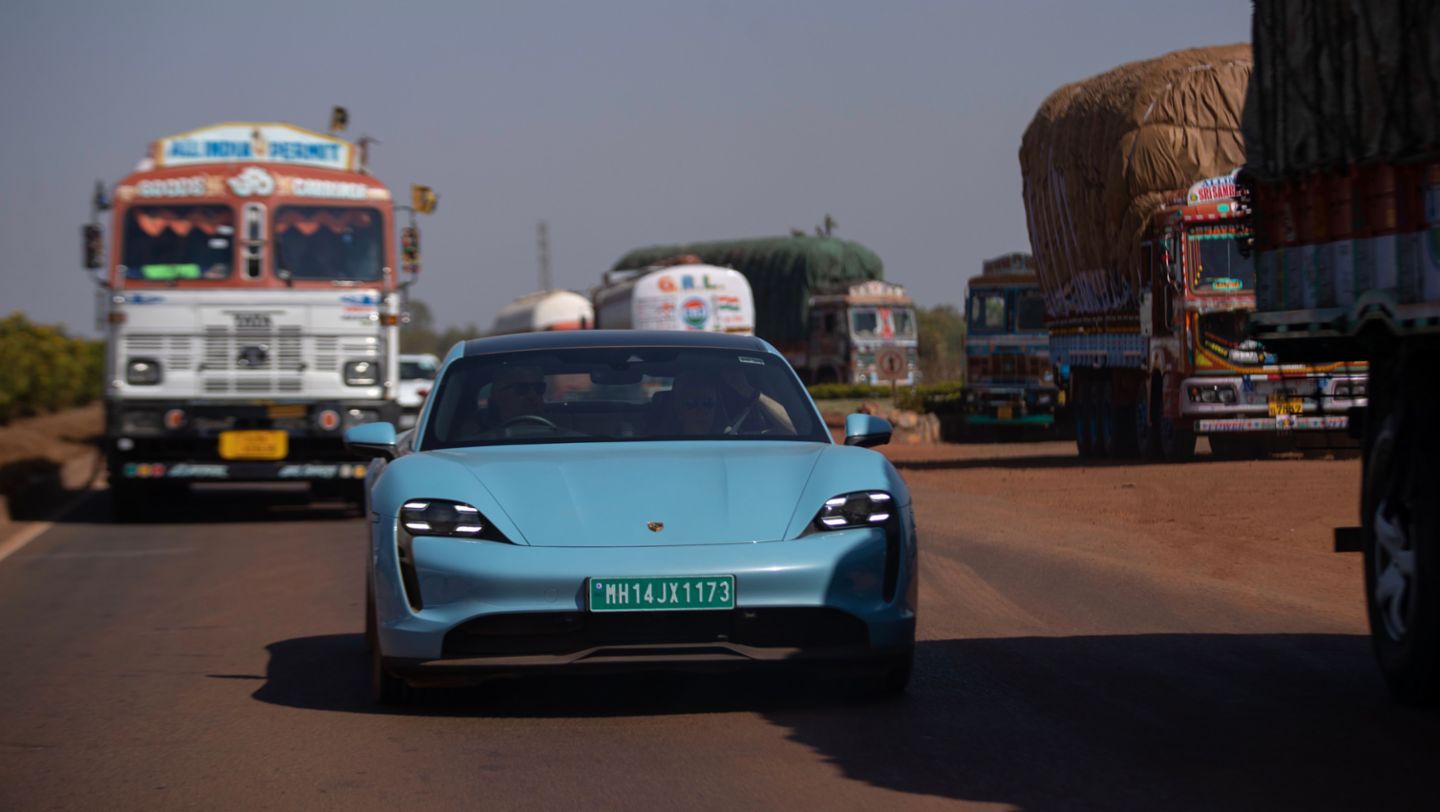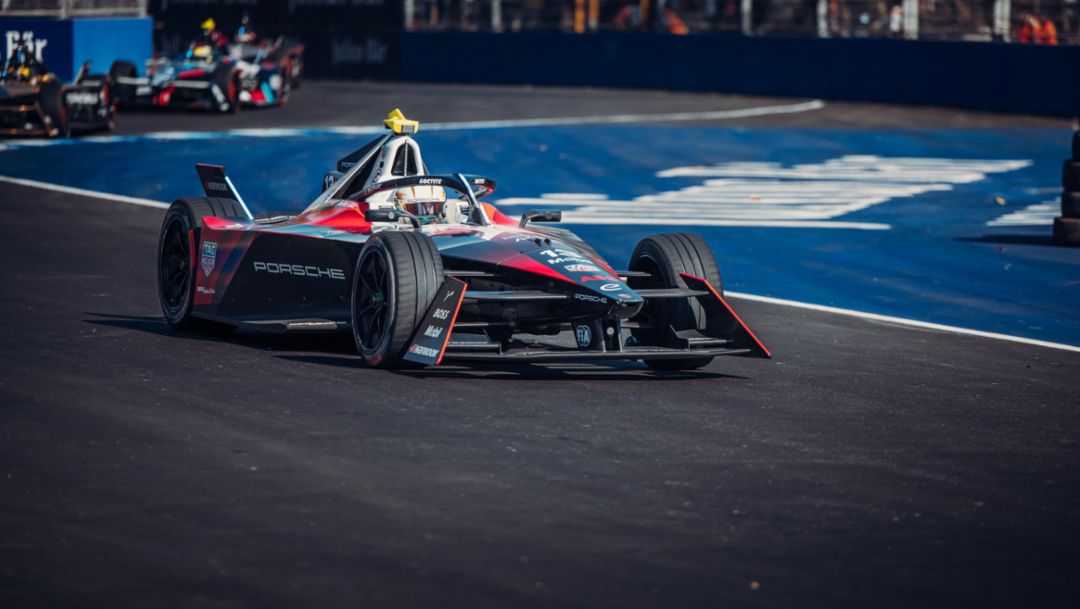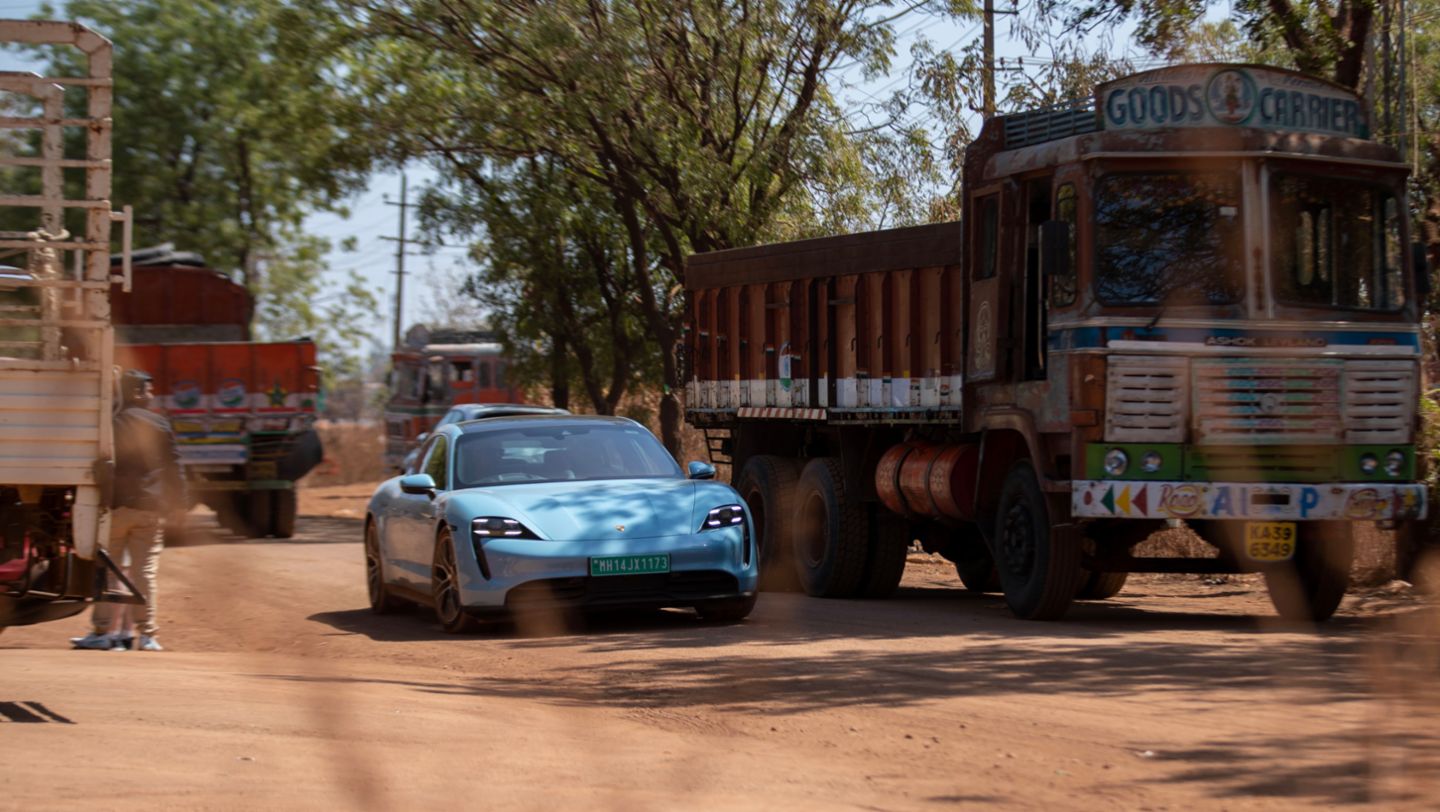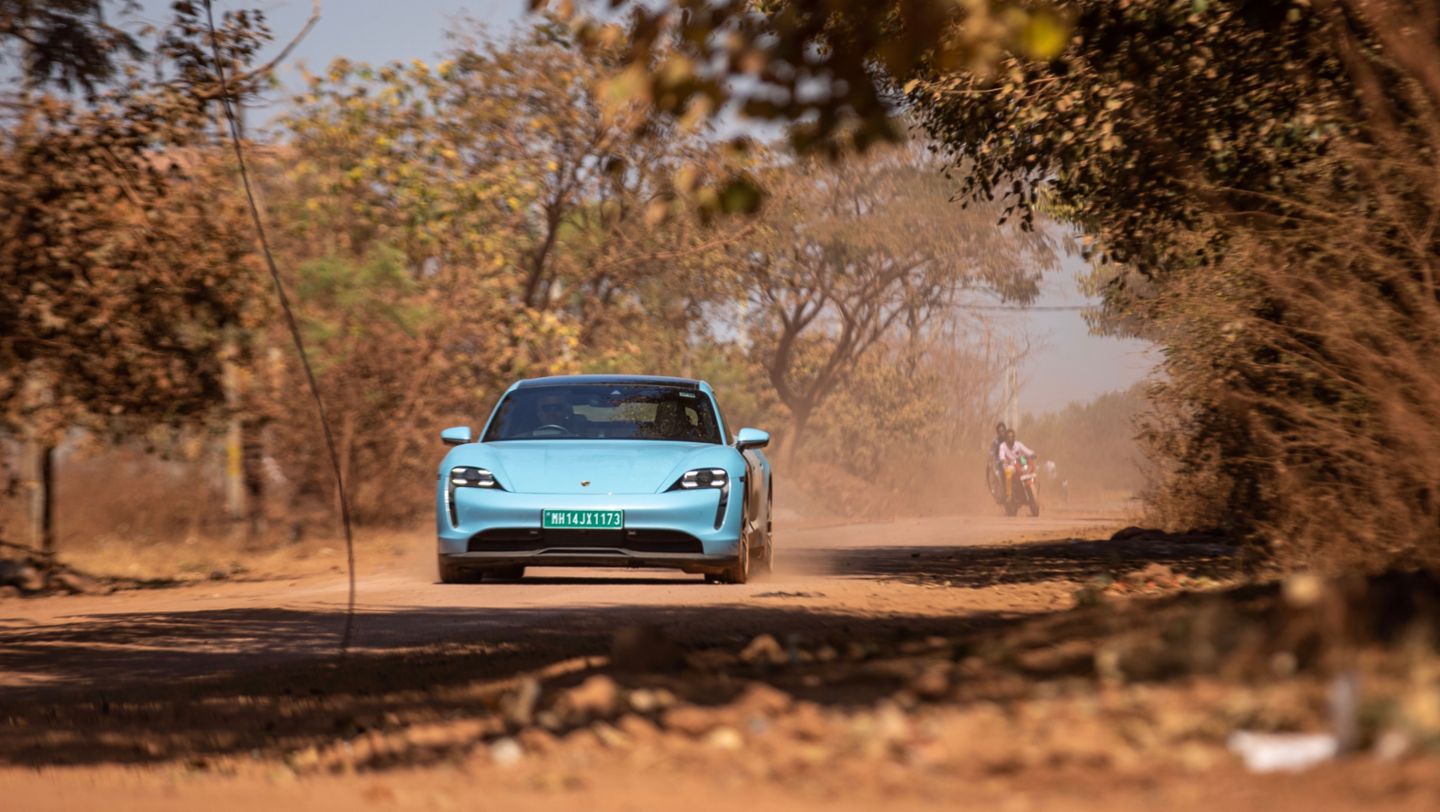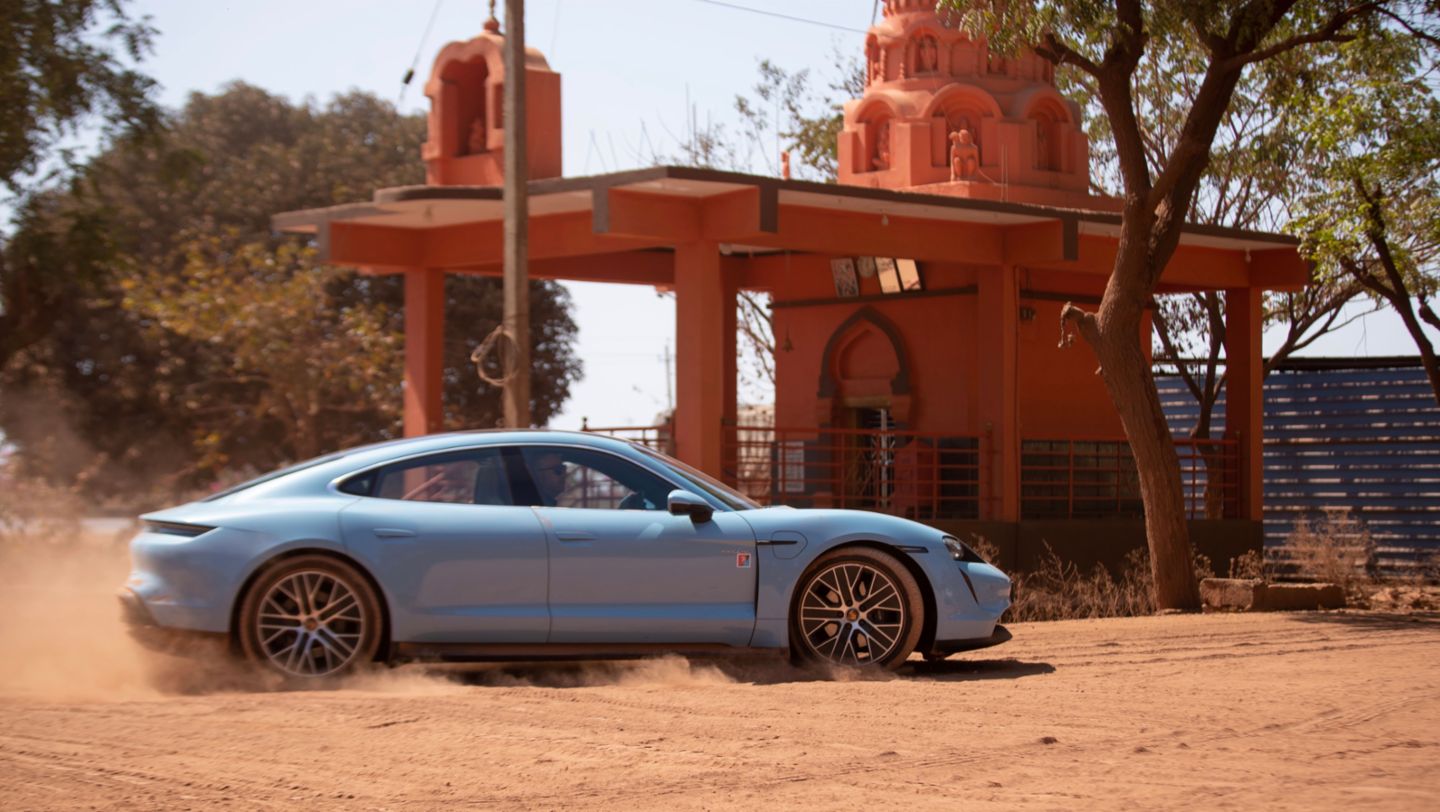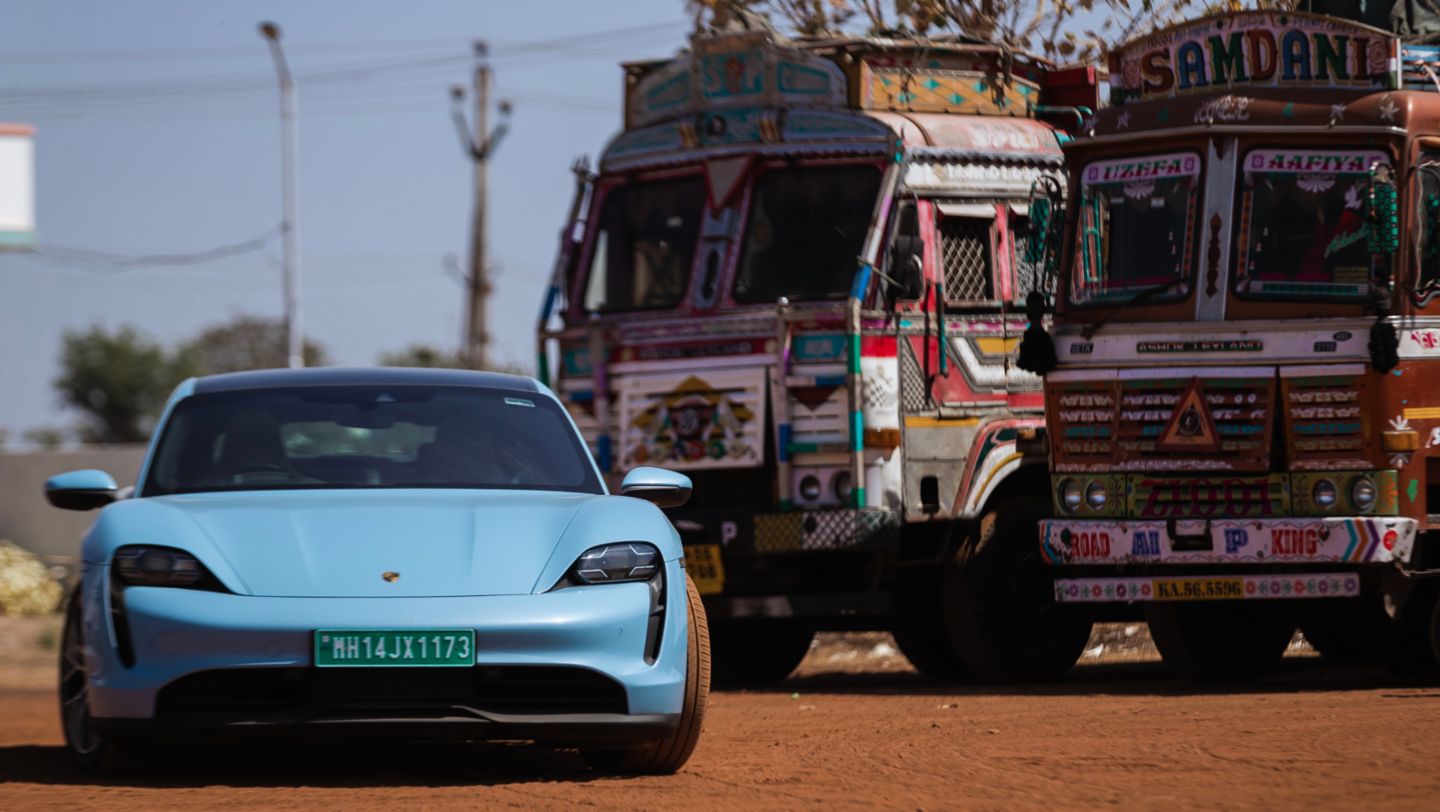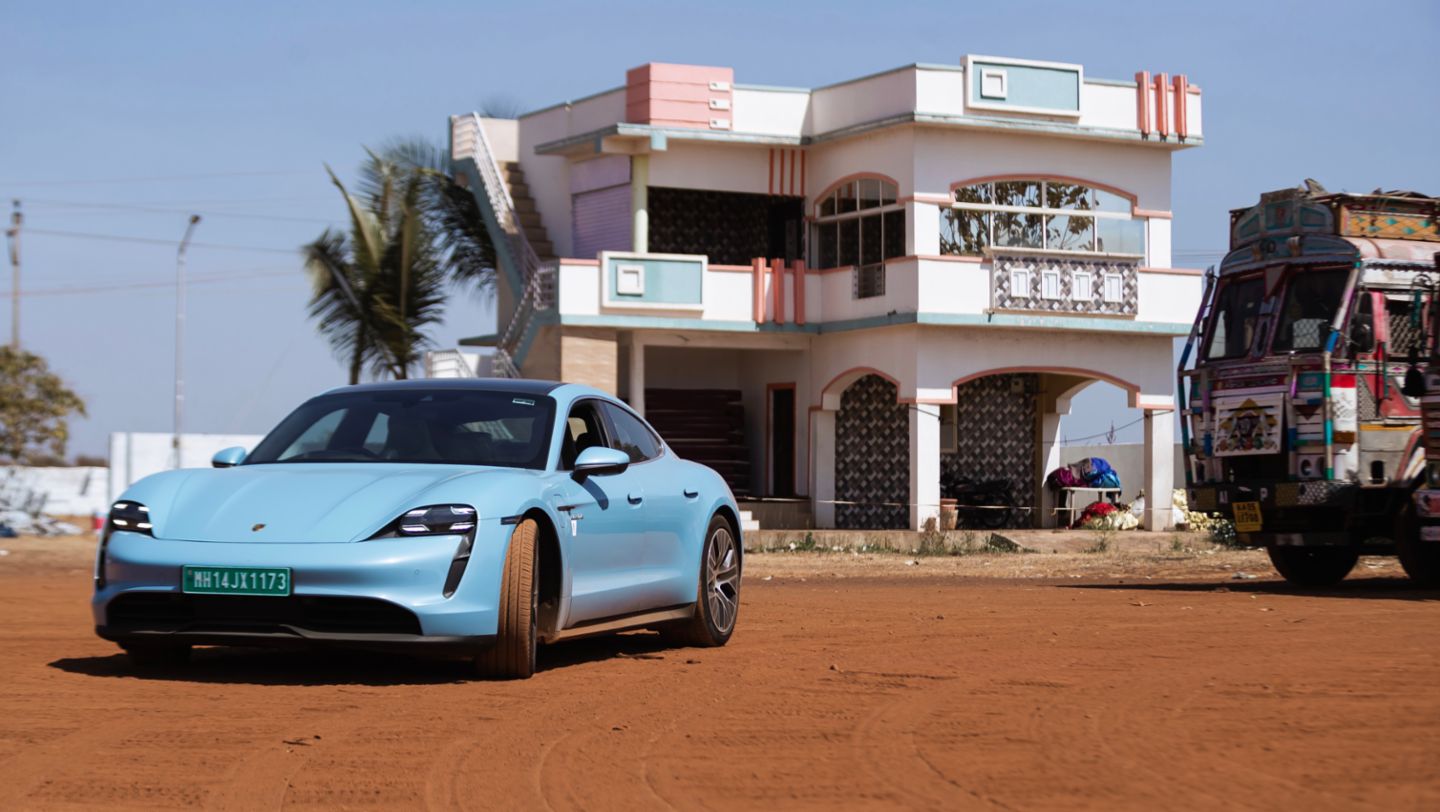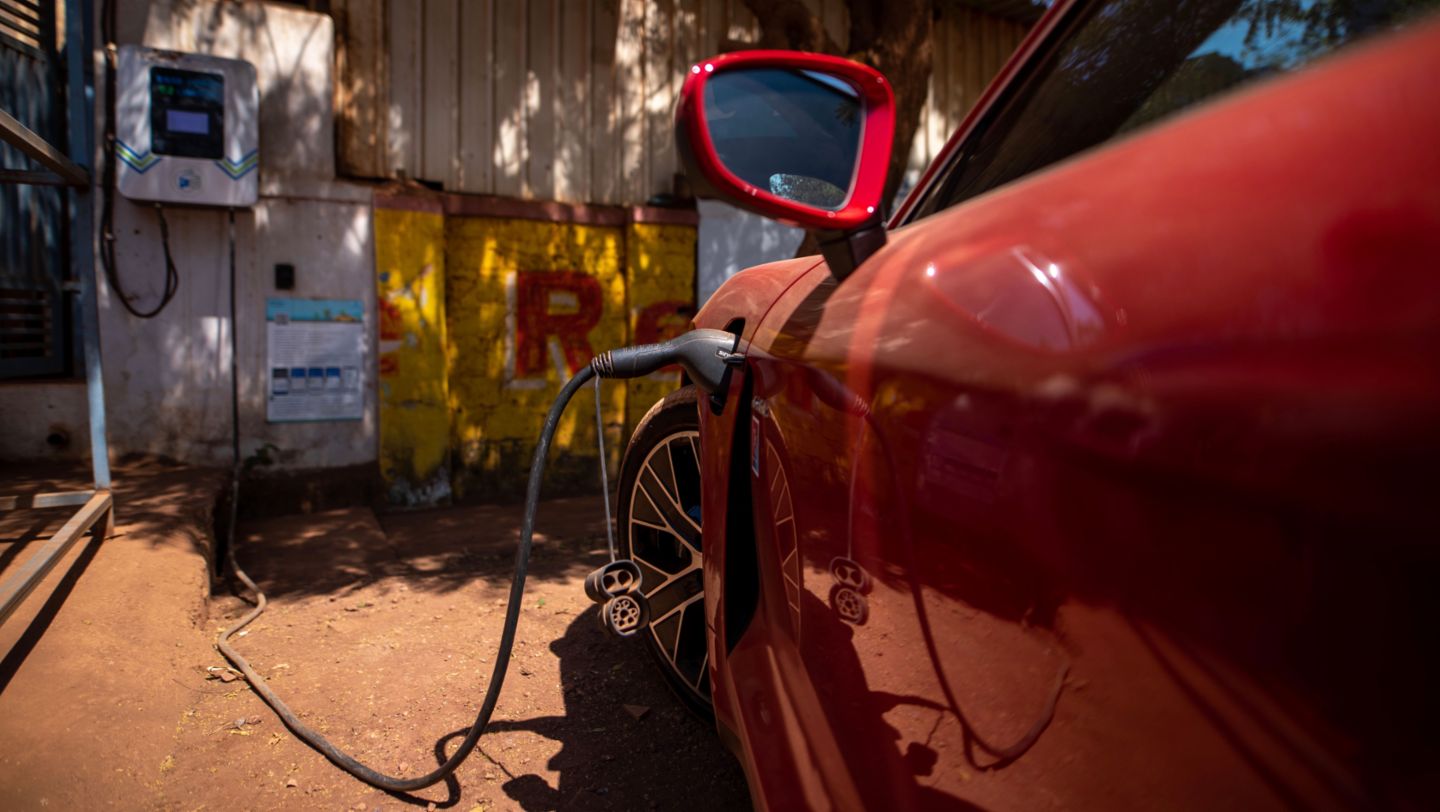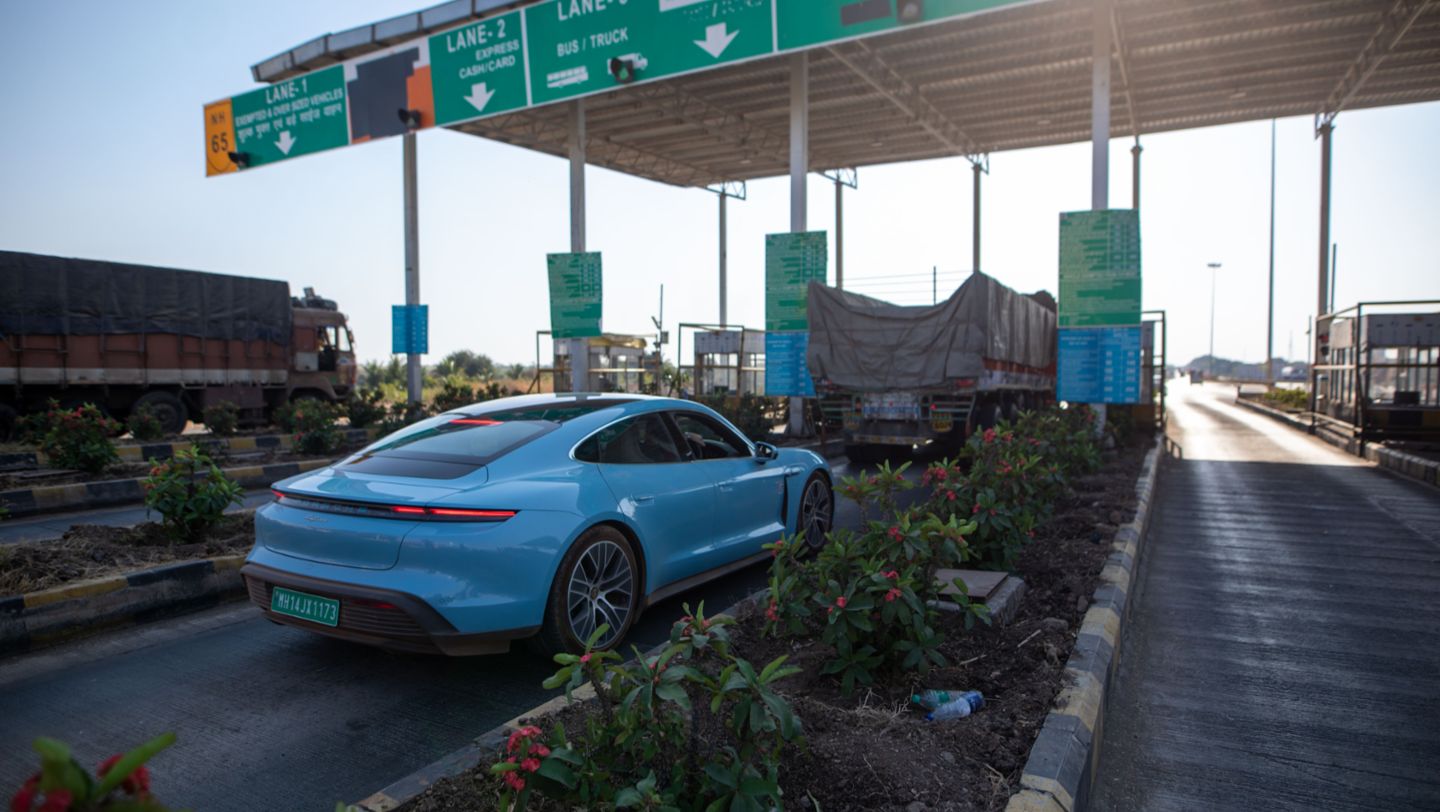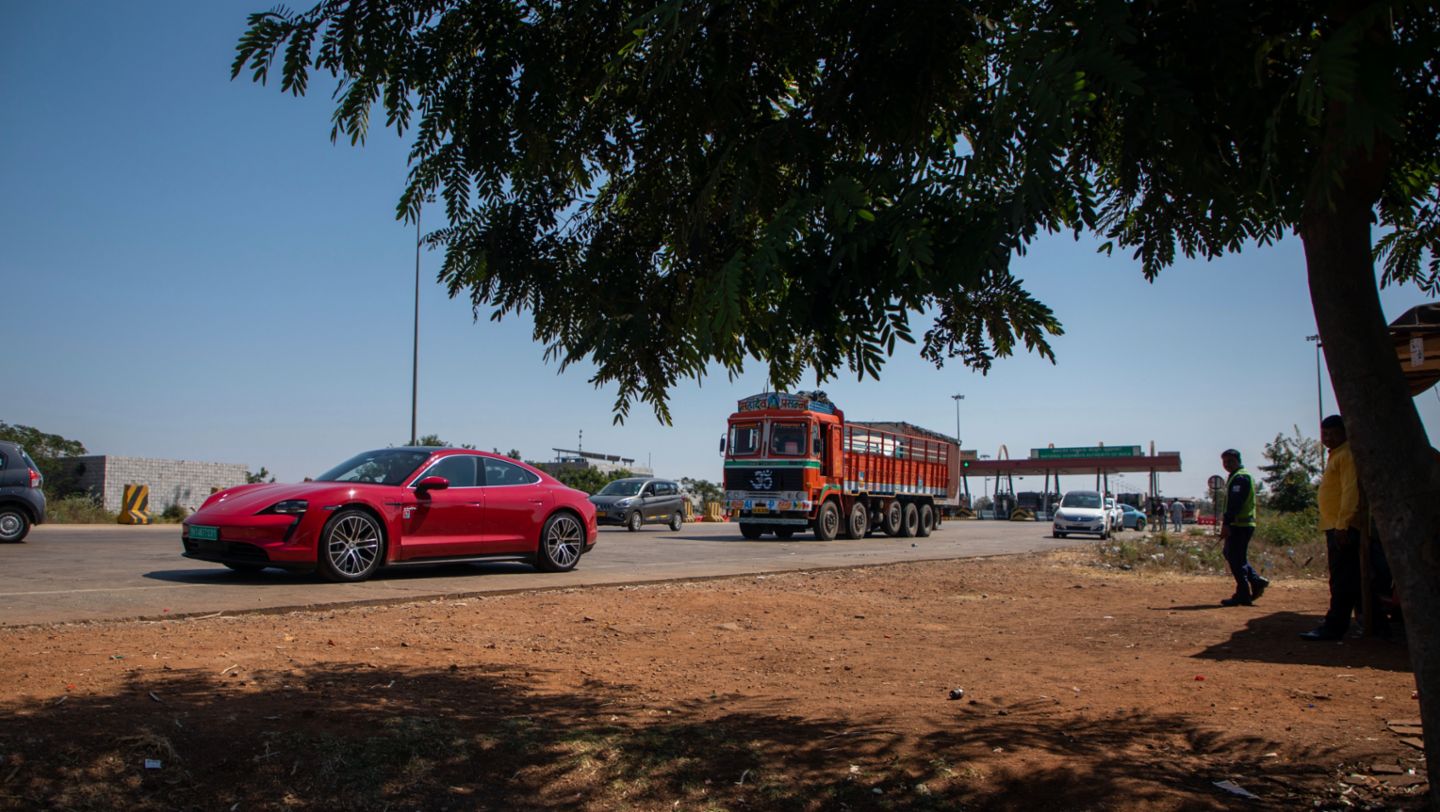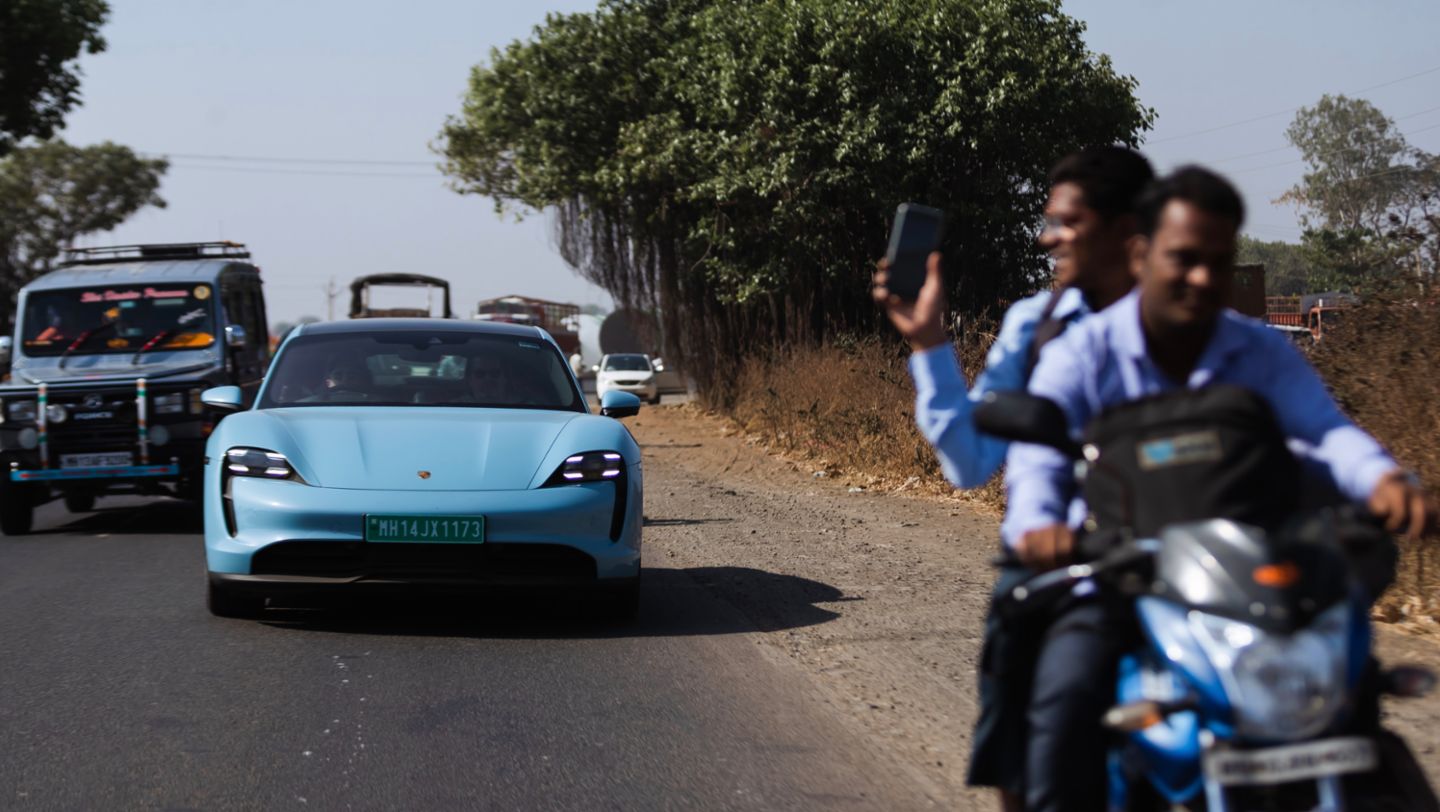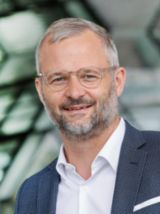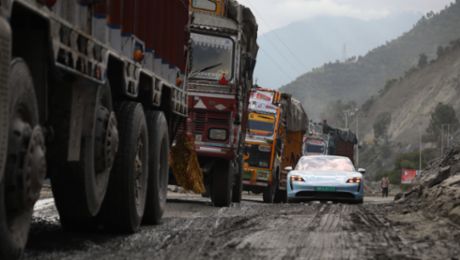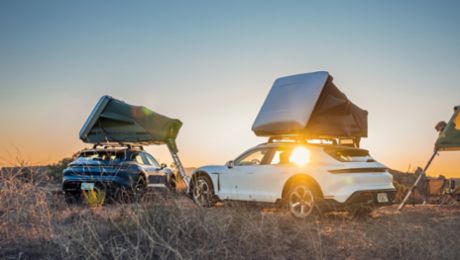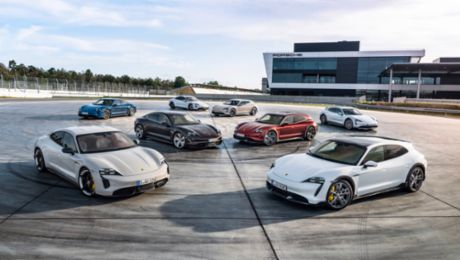India is booming: Before the end of this year, India is set to replace China as the world's most populous country, then with 1.6 billion people. The economy is also on the rise. Almost 800,000 millionaires live on the subcontinent, more than Frankfurt has inhabitants. In addition, there are 166 trillionaires. Top 3 in the world. Porsche is also doing well in India. Last year, Brand Director Manolito Vujicic and his team sold exactly 779 sports cars.
This represents an increase of more than 60 percent over the previous year. Particularly pleasing: the Taycan already accounts for almost 10 percent of the total volume in its first full year in India. 78 all-electric sports cars found a buyer. Although India is now the world's third-largest car market, electromobility is still in its infancy. Although a good 300,000 battery electric vehicles (BEVs) were sold last year alone, this figure compares with fewer than 2,000 charging stations. By 2027, there should be 100,000 chargers.
The preparations
The charging infrastructure is not exactly an ideal prerequisite for a road trip across the country. Added to this are temperatures of almost 40 degrees Celsius. It's the depths of winter in India, but the automatic climate control is in constant use.
The test cars are also equipped with the 79 kWh Performance Battery and not the 93 kWh optional Performance Battery Plus. Holey charging infrastructure, small battery, high temperatures. What could possibly go wrong?
Day one
Thursday morning at 7 a.m. sharp, we set off from Mumbai. We have 750 kilometers ahead of us. A good 400 kilometers on the first day and just under 350 on the second. Distances that can be covered in Europe in one day are impossible to manage in India - regardless of the drive technology. Average speeds are very low due to the sheer mass of vehicles of all kinds. In addition, there are potholes in XXL format, roadways with the topography of a motocross track and animal road users of all kinds. After we have struggled through the rush hour, which lasts 24/7 in Mumbai, we take the freeway towards Pune. The tarmac here is new and smooth. It takes us about three hours to cover the 150-kilometer distance. Although the battery of the rear-wheel drive Taycan is still well filled, we drive to a charging station next to the freeway. We want to find out whether we have prepared well enough and can charge at all.
To load electricity in India, you need four things: a smartphone with an Indian phone number, an Indian credit card, the right app and every ounce of patience you can muster. Charging rarely works on the first attempt – either the charging station, the app or both are likely to go on strike. With time, however, you get a feeling of how to handle things in India. In essence, you just have to keep trying until you get the hang of it. Restart the app, reconnect the charging plug to the charging station, open the app again, and so on.
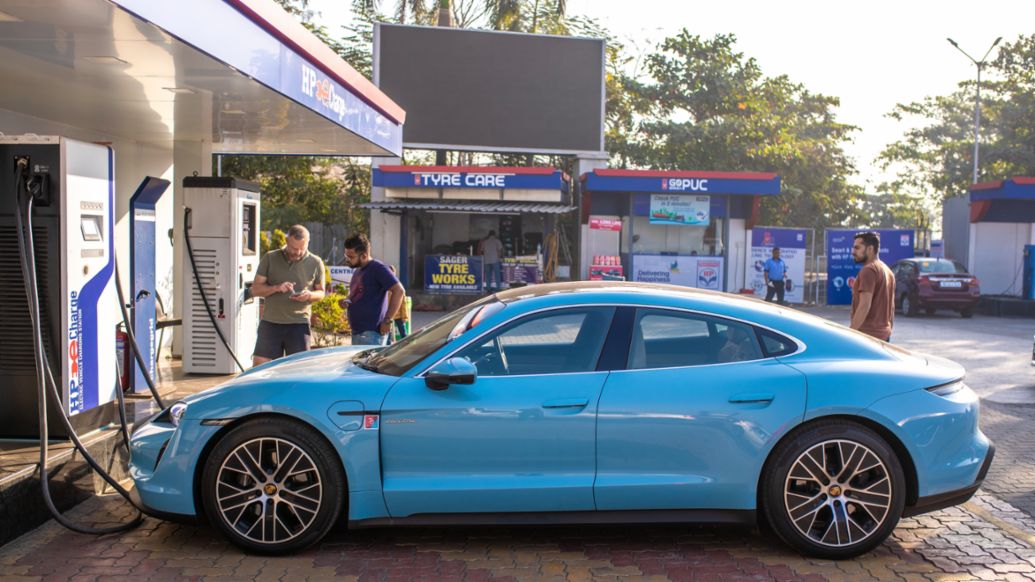
Another peculiarity: In India, you need the right app for each provider. There is still no superordinate charging service. So, especially in the beginning, you spend a lot of time downloading apps, registering and entering credit card details. With 75 kW, the first charger is particularly potent. 30 kW is the norm here in the HPC sector. However, at 20 cents per kWh, charging also manages to be quite cheap. The price is about a third of what we pay in Germany.
After about 45 minutes, we continue our road trip and continue on the highway. The Taycan's air suspension has to give its all when driving through towns. The speed bumps here are several, high asphalt bumps in a row. Even with the best suspension, the passengers are jolted. Walking speed is far too fast here, and lift mode is mandatory. If you miss one of these traps, you at least lose your landing gear. But that is just when you enter a town. Outside the roads are in very good condition for the most part. At lunchtime, we make another stop. We find a charging station and restaurant right next to each other thanks to our app. The Taycan charges for a good hour at 30 kW, during which we sample Paneer Masala and Aloo Jeera Dry. Delicious. Compared to the average rest stop in Europe, the Indians serve star cuisine at a fraction of the price. Saturated for less than four euros.
Our destination for today is Solapur. It sounds like pure solar energy, but it's a city of millions in the western Indian state of Maharashtra. Here, the Taycan looks like an UFO in the streetscape. Almost everyone turns to look at the Porsche in Frozen Blue, waves, smiles, and pulls out their cell phones to shoot a video or take a selfie with the car. Every time we stop, we are immediately surrounded by curious locals. Children in particular react to the Taycan, also or perhaps because of the fact that they've probably never seen one live before. We reach our hotel around 6 p.m. Eleven hours for 400 kilometers. The average speed is about 50 km/h. The rest went for a loading stop, the lunch break and photo drives. At the hotel there is a positive surprise. There are three AC chargers in the underground garage, each with 7.4 kW charging power. Interesting: The kilowatt hour of electricity here costs more than the DC electricity at public charging points. What won't you do for 100 percent State of Charge (SoC) the next morning?
Day two
8 a.m. Departure. 350 kilometers to Hyderabad. Formula E is waiting and the traffic out of the city. Every inch of traffic space is used. The constant honking of auto-rickshaws, cabs and trucks is omnipresent. What is usually interpreted as a grim warning here is considered a well-intentioned hint. The horn replaces the wing mirror. Attention, I am next to you and behind you, is the motto. It works - somehow. Also because the Indians drive without any aggression. So out of the city and onto the highway. Here we reach the limits of the Indian charging infrastructure for the first time. On the section Solapur - Hyderabad we only find charging stations of one provider. To say it in advance: Not a single one works. Most of them are not even connected.
Friendly gas station employees tell us about stations that are not shown in the app and are supposed to work. But here, too: All screens black. Fortunately, the Taycan proves to be an efficiency miracle under these conditions. Consumption drops to 16 kWh. Despite the smaller battery, well over 400 kilometers are possible. We decide to put our lunch break far back and drive to the outskirts of Hyderabad in one go. There is a hotel with two HPC chargers. Again it takes 20 minutes until the charging process starts. Another insight: We always charge a little more than necessary. You never know when there will be fresh electrons again. Shortly before sunset we reach Hyderabad.
Day three
The third day is all about why we are doing this road trip in the first place: The first Formula E race in India. After an accident in practice, Porsche driver Pascal Wehrlein has to go to hospital briefly on Friday for observation. However, the doctors give the green light and Wehrlein can take part in Saturday's qualifying alongside Antonio Felix da Costa, who is contesting his 100th Formula E race. The two put their Porsche 99X Electric in P12 and P13.
Things go much better in the race: António Félix da Costa sensationally finishes third on the podium. Pascal Wehrlein extends his lead in the drivers' championship in fourth place. In the team standings, Porsche is at the top of the current standings after four of 16 races. Happy faces at the TAG Heuer Porsche Formula E team. In the evening, Pascal Wehrlein is also suitably happy. Even if he flies back to Germany with a few bruises.
Day four
On Sunday morning, we set off back to Mumbai. This time it's 350 kilometers on the first day and 400 on the second. Hyderabad is still sleeping a bit. The traffic is not as heavy as usual. We drive again through bustling towns and over two-lane country roads towards the west. To everyone's surprise, this time we find a charger that is supposed to work. After just under 200 kilometers, we leave the highway and turn onto a dusty back road reminiscent of North Africa. The Taycan is immediately covered with a layer of the finest dust. Dakar feeling comes up. The 30kW charger next to a tire dealer actually works and we can combine the charging stop with the lunch break again.
After we return, another e-car is charging. We strike up a conversation. Mr. Singh is an IT specialist from Pune and on a family trip with his wife and parents-in-law. He is interested in new technologies and has therefore bought a BEV. But also because of the cost advantage over his diesel. By way of comparison, driving a 100-kilometer Taycan in India doesn't cost five euros. A comparable combustion engine costs almost three times as much because of the relatively high fuel prices. Around 2 p.m., we tackle the last leg of the day back to Solapur. For the 150 kilometers we need three hours. At the hotel, we can make use of the total of three AC chargers again and fully charge the Taycan overnight.
Day five
Around 7 a.m. the last day of driving begins. The last 400 kilometers. As we have already set off with the sunrise, there is even time to enjoy a sugary Chai Tea at the roadside. Black tea with milk and traditionally spiced with cardamom, ginger, cloves, cinnamon and black peppercorns. Locals pay 7 rupees - the equivalent of 8 Euro cents. Tourists and road-trippers pay a little more. Again, very friendly locals immediately come to take pictures and take a look inside the Taycan. The additional passenger display causes a lot of excitement.
Back on the highway, the drive is repeatedly interrupted by toll stations similar to those in Italy. Since the Taycan has a coated windshield, the scanner doesn't always recognize the toll sticker. But again, we are helped immediately and a manual scanner is held up to the sticker inside. We plan our lunch stop this time in Pune directly in the city. Here there is a charging station of a provider with whom we have had the best experience so far. For this we also accept the permanent traffic jam in the city. Around 2 p.m. we continue our journey and tackle the last 150 kilometers. On this section, the road goes downhill for quite a while. This has an effect on the consumption of the Taycan. In the meantime, it drops to just under 12 kWh. On the freeway, we are allowed to drive at 100 km/h. Until we reach Mumbai, the consumption rises again to 13.5 kWh. Also because the traffic is even heavier than usual and we need four hours.
Conclusion
1,500 kilometers of electric driving through India in the Porsche Taycan. That sounds like a great adventure, and it is. The country is only at the very beginning of electromobility. Considering this, it was extremely easy to cover this distance with a BEV. You need the right apps, a lot of patience, and an efficient e-car like the Taycan to make it through this adventure. In return, one experiences amazing things in connection with electric mobility and is often pleasantly surprised.
